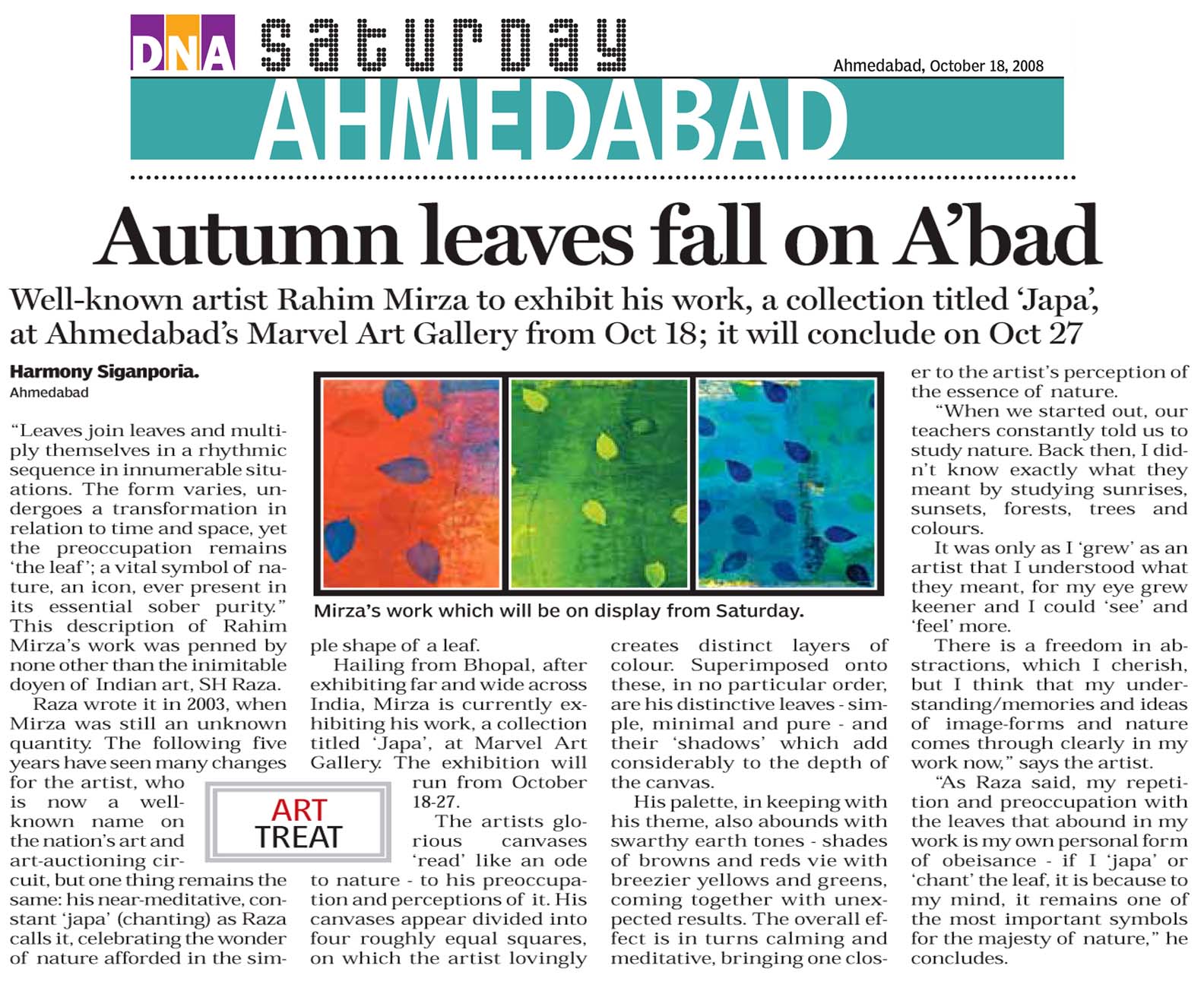Autumn leaves fall on A’bad
Well-known artist Rahim Mirza to exhibit his work, a collection titled ‘Japa’,
at Ahmedabad’s Marvel Art Gallery from Oct 18; it will conclude on Oct 27
Harmony Siganporia.
Ahmedabad
“Leaves join leaves and multiply themselves in a rhythmic sequence in
innumerable situations. The form varies, undergoes a transformation in
relation to time and space, yet the preoccupation remains ‘the leaf ’; a vital
symbol of nature, an icon, ever present in its essential sober purity.” This
description of Rahim Mirza’s work was penned by none other than the inimitable
doyen of Indian art, SH Raza.
Raza wrote it in 2003, when Mirza was still an unknown quantity. The following five
years have seen many changes for the artist, who is now a wellknown name on
the nation’s art and art-auctioning circuit, but one thing remains the same: his
near-meditative, constant ‘japa’ (chanting) as Raza calls it, celebrating the wonder
of nature afforded in the simple shape of a leaf.
Hailing from Bhopal, after exhibiting far and wide across India, Mirza is currently
exhibiting his work, a collection titled ‘Japa’, at Marvel Art Gallery. The exhibition will
run from October 18-27.
The artists glorious canvases ‘read’ like an ode to nature – to his preoccupation
and perceptions of it. His canvases appear divided into four roughly equal squares,
on which the artist lovingly creates distinct layers of colour. Superimposed onto
these, in no particular order, are his distinctive leaves – simple, minimal and pure – and
their ‘shadows’ which add considerably to the depth of the canvas.
His palette, in keeping with his theme, also abounds with swarthy earth tones – shades
of browns and reds vie with breezier yellows and greens, coming together with unexpected
results. The overall effect is in turns calming and meditative, bringing one closer to the
artist’s perception of the essence of nature.
“When we started out, our teachers constantly told us to study nature. Back then, I didn’t
know exactly what they meant by studying sunrises, sunsets, forests, trees and colours.
It was only as I ‘grew’ as an artist that I understood what they meant, for my eye grew
keener and I could ‘see’ and ‘feel’ more.
There is a freedom in abstractions, which I cherish, but I think that my understanding/
memories and ideas of image-forms and nature comes through clearly in my work now,”
says the artist.
“As Raza said, my repetition and preoccupation with the leaves that abound in my
work is my own personal form of obeisance – if I ‘japa’ or ‘chant’ the leaf, it is because to
my mind, it remains one of the most important symbols for the majesty of nature,” he
concludes.








